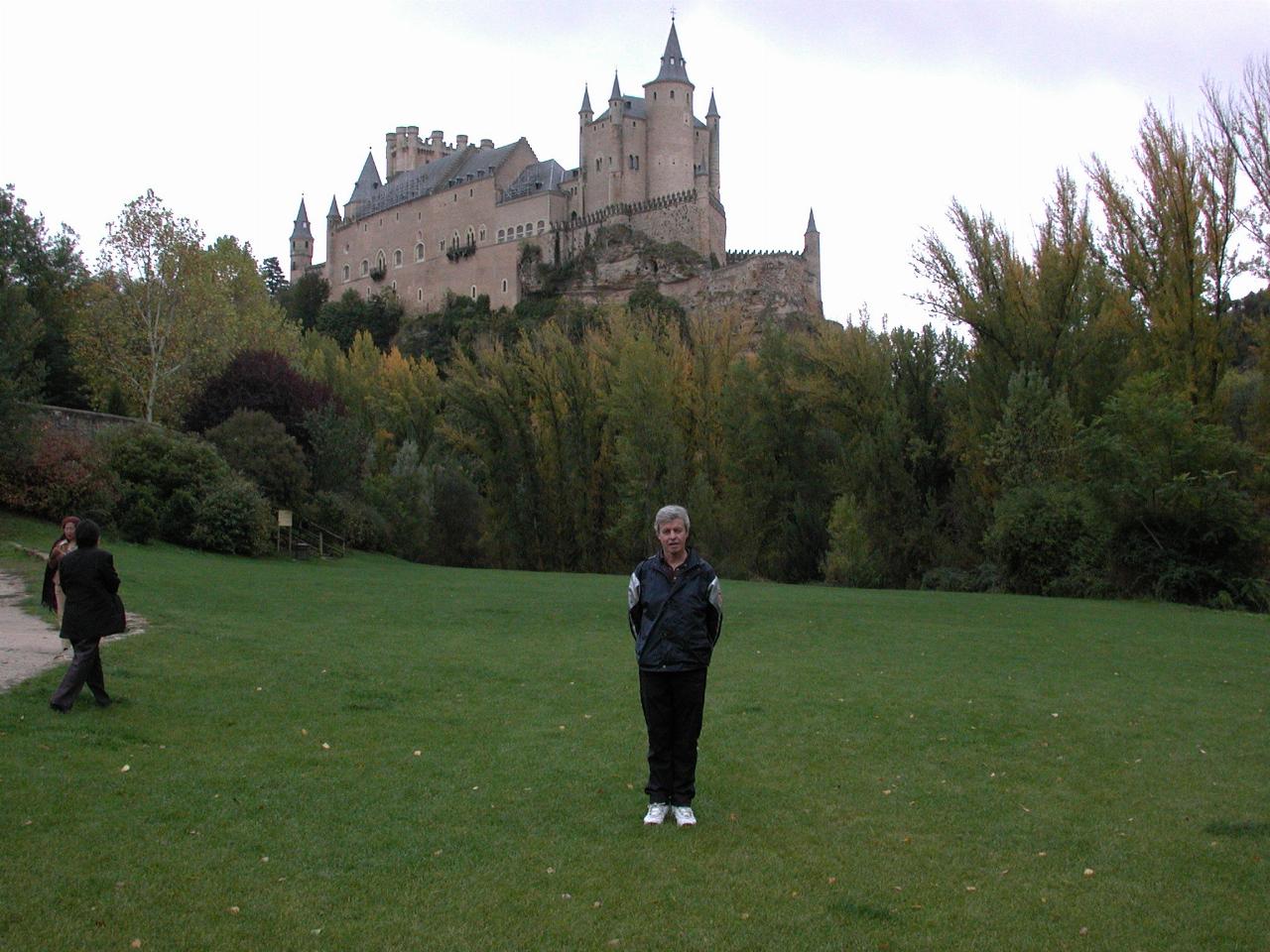
Economic recession, war and a 1599 plague nearly bought Segovia to ruins, but it rose again under the Bourbons who built their summer palace at nearby La Granja. It became a city known for its writers and artists, the most famous of whom was the early 20th century poet Antonio Machado.

Across the street from the convent is a nice park, with a wonderful view of the Alcazar (more later on that too).
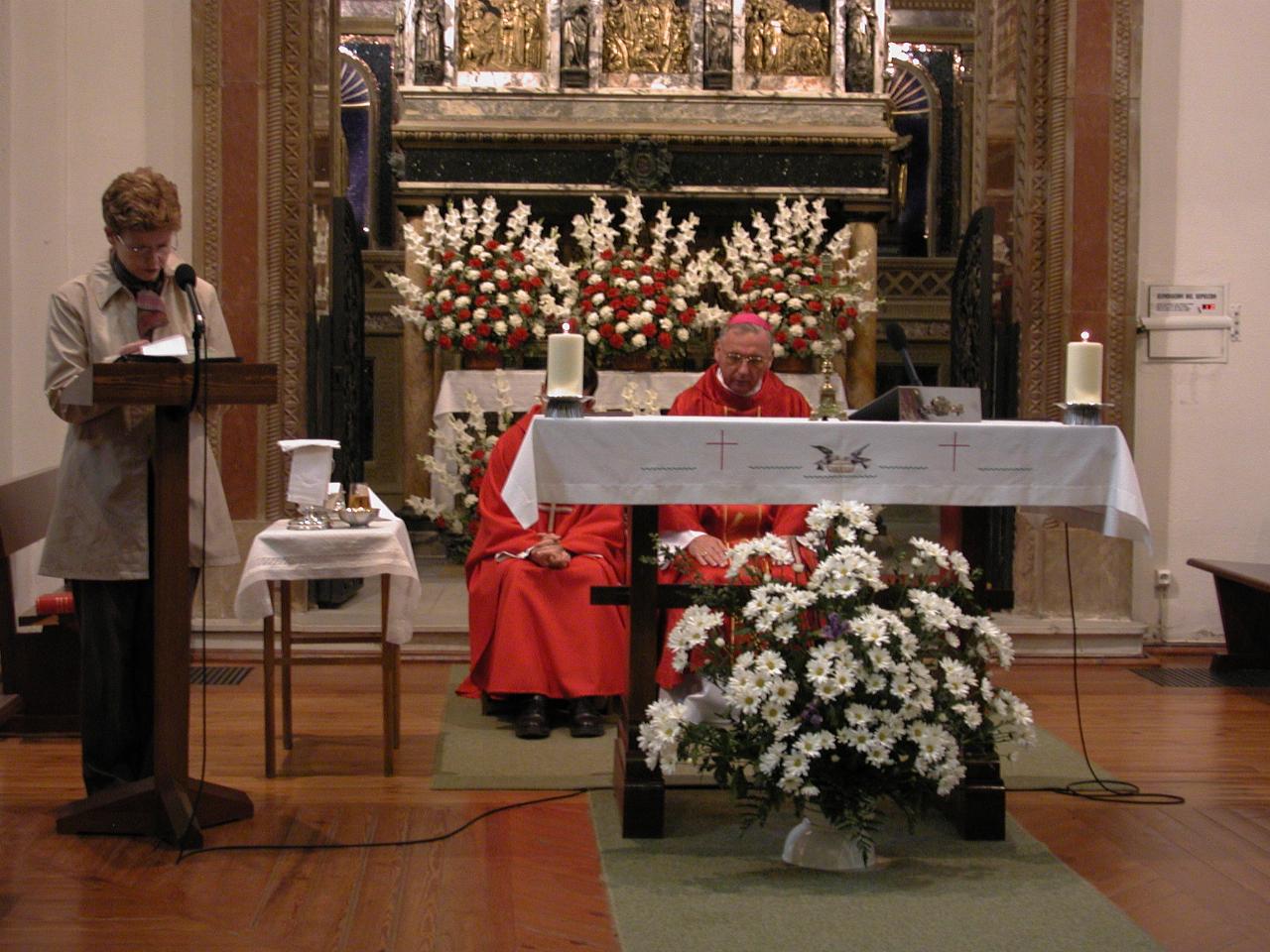
Anne-Maree does the honours of reading today. Father Mark wasn't really hiding behind the candle - it just looks that way!
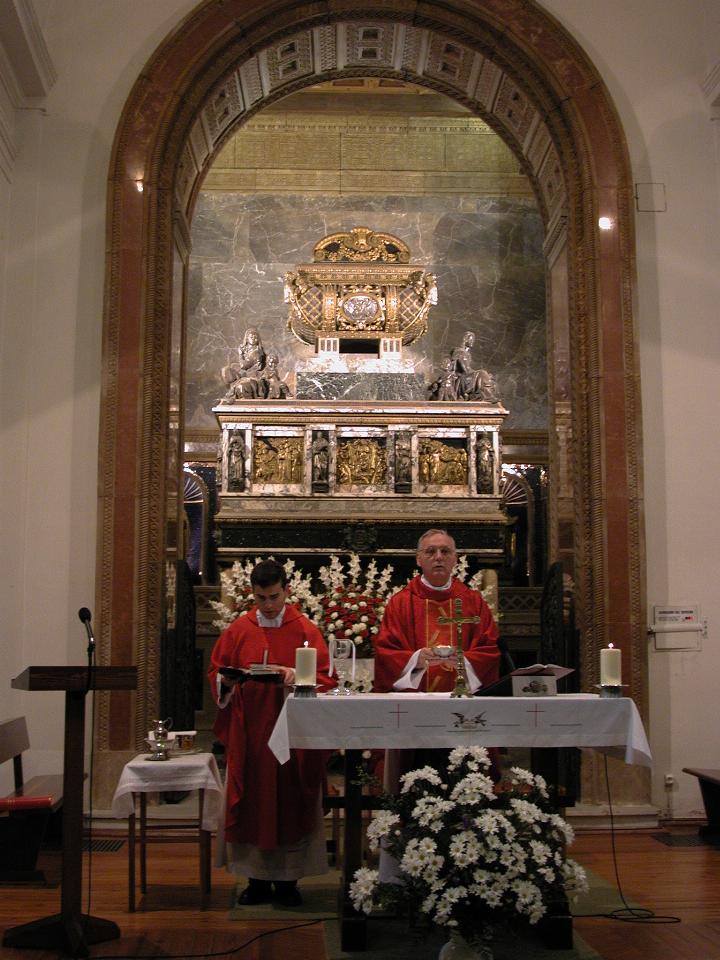
Father Mark and Bishop Geoffrey during Mass, in front of the mausoleum with the remains of St. John of the Cross.
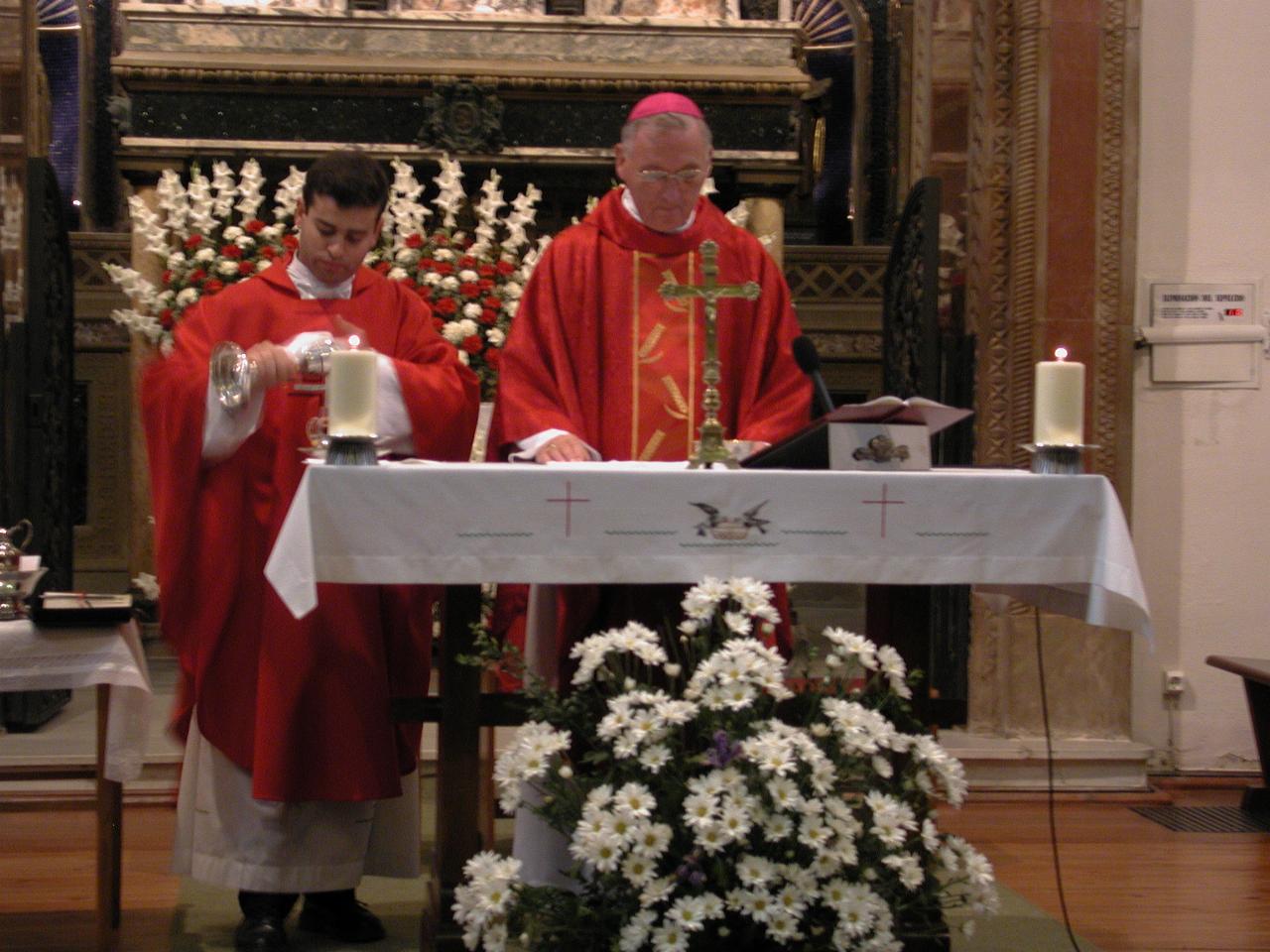
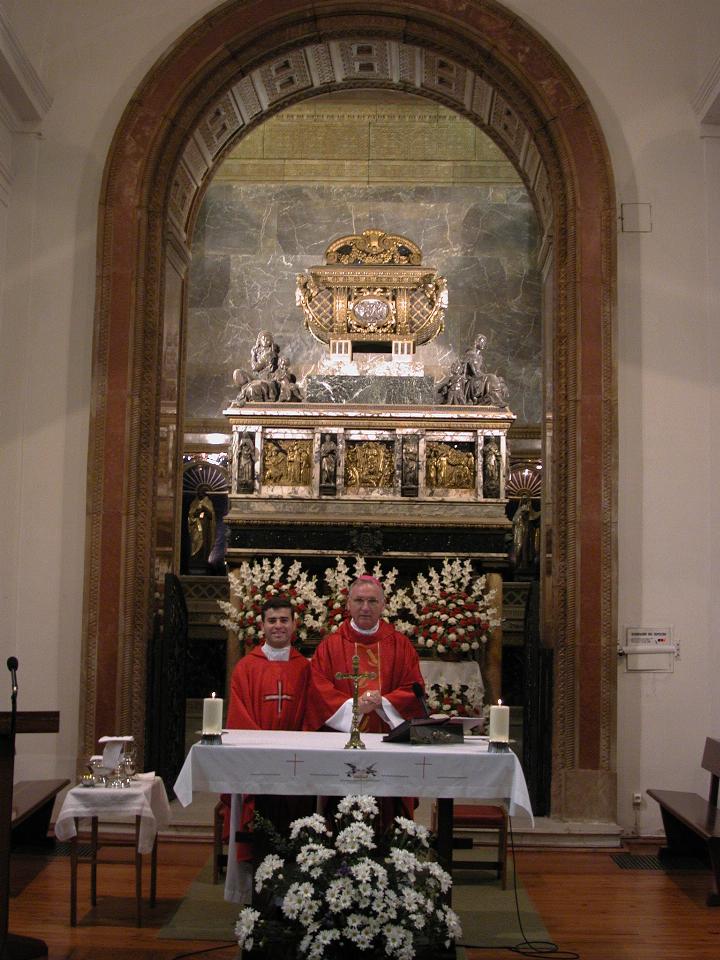
After Mass there was a "photo session".
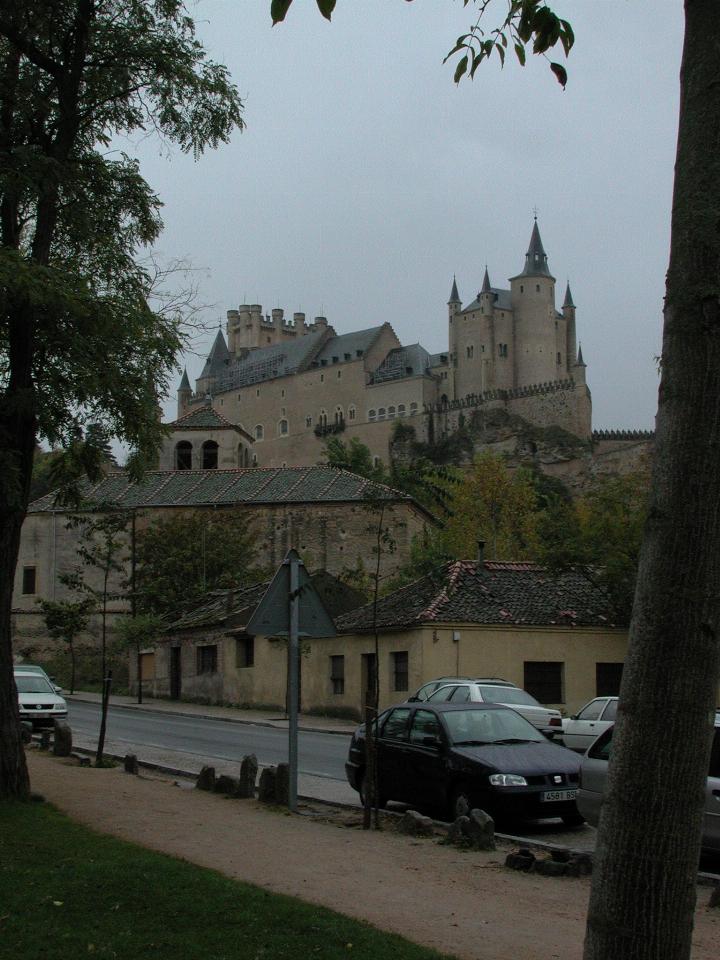
Another view of the Alcazar from the convent.